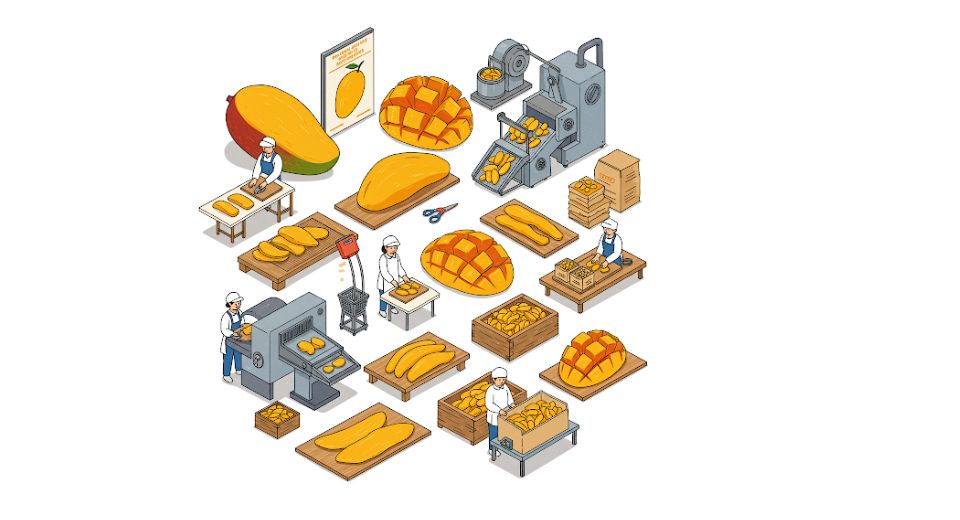
Apr 21, 2025

Currently, the Dried Mango Market stands in stark contrast to what it was a few twinkling decades ago and presents a fabulous amalgamation of trade, consumer behavior, and agricultural output in the worldly context. Once considered a seasonal snack confined to certain tropical regions, dried mango has found its way to international markets where convenience coincides with nutritional consciousness. The study lays bare the disappearing boundaries of dried mango as part of everyday diets within several cultural settings, transforming this into a product of global consequence rather than that of an isolated regional favorite.
Global Dried Mango market is estimated to reach $1,028.75 million in 2025 with a CAGR of 6.2% from 2025 to 2032.
There is a gradual evolution in the positioning of dried mangoes within the worldwide marketplace and perception by consumers on their interests in it. From being a humble sun-dried fruit sold at roadside stalls to becoming a prized possession on sophisticated supermarket shelves, the development of dried mango can tell a lot about changes in food consumption patterns within a society. So, they adopted this trend of eating healthy without preservatives as an option in easily available snack items. Dried mango with properties of natural sweetness and fiber finds its place in this growing number. Unlike processed snacks that rely heavily on artificial flavors or additives, it provides a fruit-forward option, leaving a lesser footprint of artificiality for consumers in what they eat.
The production and processing of mangoes for drying have become more sophisticated. Producers' emphasis is more on quality, consistency, and sustainability. The three countries-the Philippines, Thailand, and India, well known for mango production over decades-invest better into post-harvest technologies for dry mango. The advances will not only retain the fruit's taste and nutritional profile but will also help in longevity and value in its international markets' shelf life. The technology has unlocked the door completely for exports, providing avenues for businesses that transcend traditional value chains.
There is innovation in packaging and presentation spurred by global interest in dried mango. Most often, flexible pouches, resealable bags and biodegradable wrappers accompany these products, especially as sustainability-related issues are gaining relevance. Brands are also adding flavors ranging from chili, honey-glazed, lightly salted, and others to satisfy differing palates. These innovative touches are not simply for creativity purposes but also show an understanding of market segmentation and consumer loyalty. Every version of the product speaks to a certain mood and taste; from the child who considers it a fun chewy treat to the athlete who is inclined to think of it as an energy booster after working out.
Online avenues have made room for both start-ups and old ones on this distribution front. E-commerce opens up impossible-to-reach regions for manufacturers and suppliers from the customer standpoint. These not only reach out to the customers but also tell the stories of brands—highlighting where such a mango would be sourced, customer partnerships with farmers, and health benefits. Such a story building around dried mango would do more in terms of giving it soul to connect with consumers, which makes the product visible and accepted by more customers.
The Global Dried Mango market also mirrors wider agricultural and economic relationships between nations. Examples of how export agreements, quality standards, and bilateral trade programs would influence how and where flow would occur include: one country's tariffs or inspection regulations either promote or inhibit that supply chain. With equal force, both national government policy and international agreement are part of the journey of the product as much as itself is the fruit; hence smaller producers greatly benefit from such agreements through fair trade practices and logistical infrastructures where waste is reduced and accessibility to global buyers improved.
The variability of climate gives a shadow over the industry's future. Mango crop subjects to hysteresis of the weather, and very extreme conditions like drought may lead to less yield due to the conditions such as storms. This vulnerability adds a certain unpredictability to the pricing and the supply chain in this case. Yet, research is going on in drought-resistant varieties and adaptive farming practices which can help to mitigate these risks. Thus, gradually even the tradition of making efforts to balance interests of environment and economics within this industry is starting to have a bearing on the future of the industry-in terms of resilience from agriculture against direction in business foresight.
Continually evolving are consumer narratives around dried mango, usually related to emotional and cultural connections. To many, it recalls memory of home, tradition, or a snack from childhood. Others might consider it a global change towards consuming mindfully. At first glance, the taste, color, and chewiness of dried mango seem straightforward, yet underneath lies a very complex system: cultivation, processing, marketing, and trade-spanning continents.
Such an elaborate description from Metastat Insight throws more than most things today into perspective regarding the Global Dried Mango market. It signifies a network of innovation, cultural exchange, and economic opportunity instead of just being a single product. Not just as a snack, dried mango symbolizes how food transcends borders and connects people in unexpected ways as global demand grows and consumers seek foods that can be both tasty and purposeful.
Drop us an email at:
Call us on:
+1 214 613 5758
+91 73850 57479